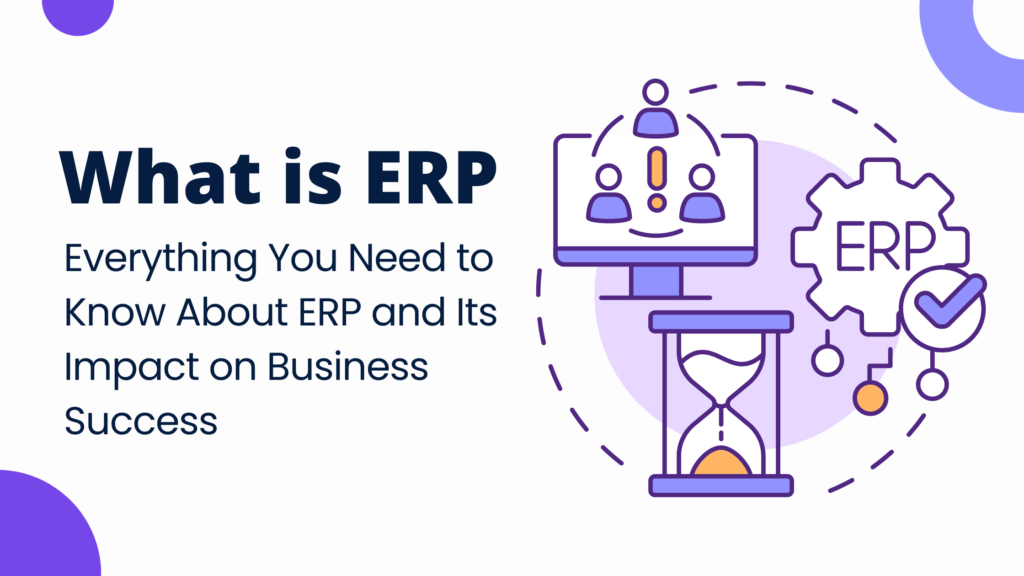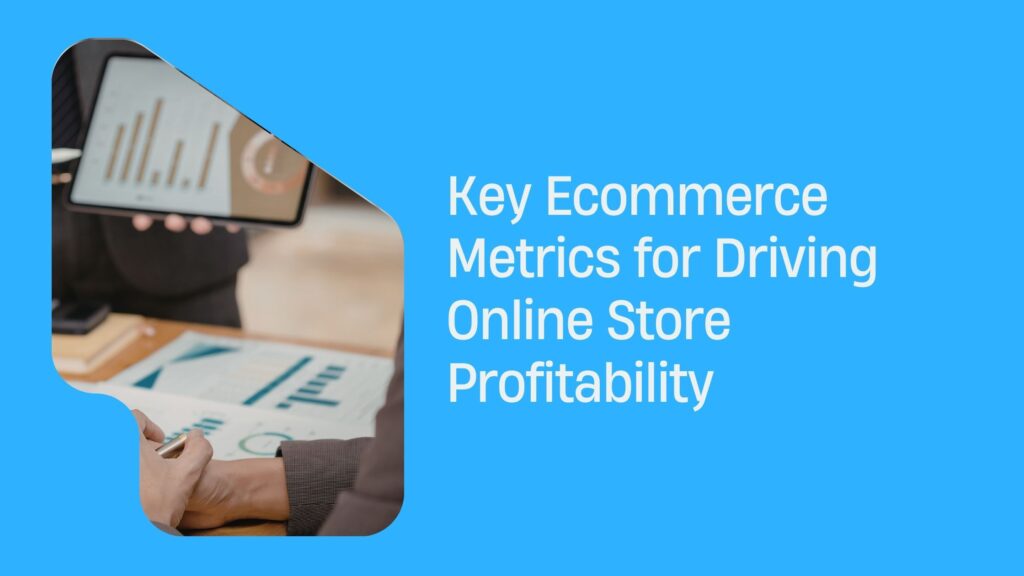What is ERP – Everything You Need to Know About ERP and Its Impact on Business Success
Introduction to ERP
ERP stands for Enterprise Resource Planning. It’s a software system that helps businesses manage core processes like finance, HR, and supply chain. ERP solutions involve integrating these functions into a single system, providing real-time data and improving efficiency. The concept of ERP began in the 1960s with simple inventory management systems. Over time, it evolved into comprehensive platforms that support various business operations. Modern ERP systems are cloud-based, offering more flexibility and accessibility. Today, ERP systems are essential for businesses to streamline operations, make informed decisions, and drive success.
Key Components of ERP Systems
The key components of an ERP system—Finance and Accounting, Human Resources, Supply Chain Management, Customer Relationship Management, and Manufacturing and Operations—work together to streamline business processes, improve efficiency, and drive business success. Understanding these components is essential for businesses looking to implement ERP solutions effectively.
Finance and Accounting
An ERP system centralizes financial data, helping businesses track income, expenses, and profitability. It automates accounting tasks, including invoicing, payroll, and tax management. Real-time financial reporting provides insights into cash flow and financial health, enabling better decision-making. ERP systems ensure compliance with financial regulations and simplify audits by maintaining accurate and up-to-date records.
Human Resources
ERP solutions, integrated with HR automation software, streamline HR processes by managing employee records, payroll, benefits, and performance reviews. They also enhance recruiting through an applicant tracking system and facilitate efficient onboarding of new employees HR portal provides employees with easy access to their training and talent development programs, allowing them to take charge of their own growth. Organizations interested in aligning these ERP-driven HR initiatives often consider workforce transformation support to optimise team capabilities and change readiness.
Supply Chain Management
ERP systems optimize supply chain operations by providing visibility into inventory levels, procurement, and order fulfillment. It helps businesses manage suppliers, track shipments, and monitor demand to avoid stockouts or overstocking. Utilizing Fleetio’s digital work orders feature ensures delivery vehicles are properly serviced and reducing the risk of shipping delays due to unexpected breakdowns. An integrated supply chain module ensures that all parts of the supply chain are working together, reducing costs and improving efficiency. This integration supports better planning and forecasting, leading to more reliable delivery schedules.
Customer Relationship Management (CRM)
ERP systems include CRM modules to manage customer interactions, sales, and support. With ERP Salesforce solutions, for example, businesses can unify their sales, marketing, and service efforts more effectively. To ensure smooth integration and performance, many rely on ongoing Salesforce support for system optimization, updates, and issue resolution. To fully unlock the potential of such integrations and tailor them to specific business processes, many organizations choose to hire a Salesforce architect. It tracks customer data, sales history, and preferences, allowing businesses to tailor their marketing efforts. CRM in ERP systems helps in building stronger customer relationships by providing timely and personalized services. It also integrates sales and service processes, ensuring a seamless customer experience from inquiry to post-sale support.
Manufacturing and Operations
ERP systems enhance manufacturing and operations by automating production planning, scheduling, and quality control. It monitors the entire production process, from raw material procurement to finished goods, ensuring optimal resource utilization. ERP systems help manage equipment maintenance, reducing downtime and increasing productivity. By integrating manufacturing with other business functions, ERP systems enable more efficient operations and faster response to market demands.
Benefits of Implementing ERP
From increasing efficiency to better decision making, after we implement an ERP system it brings many benefits to a business. It streamlines processes, improves data accuracy, and ultimately drives profitability. Understanding ERP solutions’ meaning and how they impact your business. Listed below are some benefits.
Improved Efficiency and Productivity
- An ERP system automates repetitive tasks, reducing manual work and errors.
- It integrates various business functions like finance, HR, and supply chain into one platform.
- Employees can access the same data, reducing time spent searching for information.
- Workflow automation speeds up processes and boosts overall productivity.
Enhanced Data Accuracy and Real-Time Information
- ERP solutions centralize data, ensuring consistent and accurate information across the business.
- Real-time updates allow teams to make informed decisions quickly.
- Data duplication and inconsistencies are minimized, improving data reliability.
- Accurate data supports better reporting and analysis, leading to more effective strategies.
Better Decision-Making Capabilities
- With all data in one place, decision-makers have a complete view of the business.
- ERP systems offer analytical tools and dashboards to monitor key performance indicators (KPIs).
- Historical data and trends can be easily analyzed to forecast future outcomes.
- Informed decisions are made faster, leading to improved business agility.
Streamlined Business Processes
- ERP solutions integrate different business processes into a single, cohesive system.
- This streamlining eliminates redundancies and improves communication between departments.
- Automated workflows ensure that tasks are completed in a logical sequence without delays.
- Consistent processes across the organization lead to higher quality and customer satisfaction.
Cost Reduction and Improved Profitability
- ERP systems reduce operational costs by automating tasks and improving resource management.
- Improved inventory management prevents overstocking and stockouts, saving money.
- By reducing errors and delays, ERP systems lower costs related to inefficiencies.
- Enhanced productivity and efficiency lead to better use of resources and higher profitability.
ERP Implementation Process
Proper planning, training, and ongoing support are key to maximizing the benefits of your ERP system. Here are the benefits:
Planning and Needs Assessment
- Start by evaluating your business needs.
- Identify which processes need improvement with an ERP system.
- Set clear goals and expectations for the ERP implementation.
- Involve key stakeholders from different departments to gather input.
- Assess your current systems to understand what needs to be integrated.
Choosing the Right ERP Solution
- Research different ERP solutions that fit your business needs.
- Consider factors like scalability, flexibility, and cost.
- Look for ERP solutions with industry-specific features.
- Evaluate the software’s ability to integrate with your existing systems.
- Choose a vendor with strong support and a proven track record.
Data Migration and System Integration
- Prepare your data by cleaning and organizing it for migration.
- Ensure that the data is accurate and up-to-date.
- Develop a plan for transferring data from old systems to the new ERP system.
- Integrate the ERP system with other essential software tools you use.
- Test the system integration to ensure everything works smoothly.
Employee Training and Change Management
- Train your employees on how to use the new ERP system.
- Provide hands-on training sessions and resources for reference.
- Address any concerns or resistance from employees early on.
- Encourage a positive attitude towards the change and highlight the benefits.
- Establish clear communication channels for ongoing support.
Go-Live and Post-Implementation Support
- Prepare for the go-live phase by conducting final tests.
- Make sure all systems are fully operational before going live.
- Monitor the system closely during the initial launch period.
- Provide continuous support to employees as they adapt to the new ERP system.
- Regularly review the system’s performance and make necessary adjustments.
- Stay in touch with your ERP vendor for updates and further support.
Challenges in ERP Implementation
These challenges make ERP implementation a complex process. Despite these obstacles, the benefits of a well-executed ERP system can significantly outweigh the difficulties. Here are some challenges –
High Costs and Resource Requirements
- ERP systems are expensive to purchase and implement.
- Costs include software, hardware, and consulting fees.
- Businesses must allocate significant time and manpower.
- Ongoing maintenance and updates add to the expenses.
- Small businesses may struggle with the financial burden.
Resistance to Change
- Employees may resist switching to a new ERP system.
- They may be comfortable with existing processes.
- Fear of the unknown can lead to reluctance.
- Proper training is essential to ease the transition.
- Management must lead by example to foster acceptance.
Customization and Integration Issues
- ERP systems often need customization to fit specific business needs.
- Customization can be complex and time-consuming.
- Integrating ERP with existing systems can be challenging.
- Incompatibility with legacy systems may cause delays.
- Customization may also lead to higher costs and longer implementation times.
Data Security Concerns
- ERP systems handle sensitive business data.
- Protecting data from breaches and unauthorized access is crucial.
- Poor security measures can lead to data loss or theft.
- Compliance with data protection regulations is necessary.
- Businesses must invest in robust security features.
Future Trends in ERP
The following trends show how ERP systems are evolving to meet modern business needs. These innovations help companies in achieving long-term success with their ERP systems.
Cloud-based ERP Solutions
- Cloud-based ERP solutions are growing fast. They offer flexibility, scalability, and lower costs.
- Businesses prefer cloud-based ERP because it allows easy access from anywhere, at any time.
- Cloud ERP systems also provide automatic updates, reducing the need for IT maintenance.
- The shift to cloud-based ERP solutions is a key trend, helping companies to adapt quickly to changing needs.
AI and Machine Learning Integration
- AI and machine learning are transforming ERP systems by automating tasks and improving decision-making.
- These technologies help in predicting trends, optimizing inventory, and personalizing customer experiences.
- AI-powered ERP systems can analyze large amounts of data to provide insights and recommendations.
- Machine learning helps ERP systems become smarter over time, improving efficiency and accuracy.
Mobile ERP Applications
- Mobile ERP applications are becoming more popular, allowing employees to access the ERP system on the go.
- These apps increase productivity by enabling real-time data access and decision-making.
- Mobile ERP supports remote work and helps in managing operations from any location.
- The demand for mobile ERP solutions is rising as businesses seek to stay connected and agile.
Industry-specific ERP Solutions
- Industry-specific ERP solutions are tailored to meet the unique needs of different sectors. For example, an ERP for construction helps manage contractors, on-site inventory, compliance documents, and equipment maintenance, all in one place.
- These specialized ERP systems address specific challenges and regulatory requirements of various industries.
- Companies prefer industry-specific ERP systems for better customization and functionality.
- The trend toward industry-specific ERP solutions ensures that businesses have the tools needed to succeed in their respective markets.
Choosing the Right ERP for Your Business
You can select the right ERP solution that aligns with your business goals and supports long-term growth. Here is how you can start –
Assessing Business Needs and Goals
- Start by understanding your business requirements.
- Identify which processes need improvement with an ERP system.
- Define your long-term business goals to ensure the ERP aligns with them.
- Consider the specific features you need, like inventory management, accounting, or customer relationship management.
Evaluating Different ERP Vendors and Solutions
- Research various ERP solutions available in the market.
- Compare the features and capabilities of different ERP vendors.
- Look for vendors with experience in your industry.
- Check customer reviews and ask for case studies to understand how each ERP solution performs.
- Evaluate the level of support and training each vendor offers.
Considering Scalability and Future Growth
- Choose an ERP system that can grow with your business.
- Consider if the ERP solution can handle increased transactions, users, and data over time.
- Ensure the system can integrate with other tools and software as your business expands.
- Think about the potential for adding new modules or features in the future.
Total Cost of Ownership (TCO) Analysis
- Analyze the total cost of ownership for each ERP solution.
- Include upfront costs like licensing fees, implementation, and training.
- Consider ongoing costs, such as maintenance, upgrades, and support.
- Evaluate the return on investment (ROI) by comparing the costs with the expected benefits.
- Choose an ERP solution that offers the best value for your budget while meeting your business needs.
Measuring ERP Success and ROI
Key Performance Indicators (KPIs) for ERP Success
Operational Efficiency – Measure improvements in processes like production, order fulfillment, and inventory management. Look for reduced cycle times and error rates.
Cost Reduction – Track savings in areas such as labor, materials, and overhead costs. Compare pre- and post-ERP expenses.
Customer Satisfaction – Monitor metrics like on-time delivery, product quality, and service response times. Improved customer feedback indicates ERP success.
Data Accuracy – Evaluate the accuracy and consistency of data across departments. High data integrity suggests the ERP system is effective.
Employee Productivity – Assess productivity gains by measuring output per employee. Regular check-ins guided by a 1-on-1 meeting with manager template can ensure employees are aligned with productivity goals and receiving the necessary support. A good ERP system should streamline tasks and improve workflows.
Scalability – Check the system’s ability to handle business growth. The ERP should support expanding operations without a loss in performance.
Methods for Calculating Return On Investment (ROI)
Initial Costs – Start by identifying the total costs of implementing the ERP system, including software, hardware, training, and consulting fees.
Ongoing Costs – Consider ongoing expenses like maintenance, support, and system upgrades.
Cost Savings – Quantify savings from reduced labor, faster processes, and fewer errors. Include any decreases in inventory holding costs.
Revenue Gains – Measure revenue increases from improved customer satisfaction, faster order processing, and better decision-making.
ROI Calculation – Subtract the total costs from the financial benefits (cost savings + revenue gains) and divide by the total costs. Express this as a percentage to determine ROI.
Payback Period – Calculate how long it takes for the ERP system to pay for itself through savings and increased revenue.
Continuous Improvement and Optimization
Measuring the success of an ERP system is crucial to understanding its impact on business. Start by tracking key performance indicators (KPIs) like productivity, cost savings, and process efficiency. Compare these metrics before and after implementing the ERP system. This helps in assessing how well the ERP solutions are working. Additionally, calculate the return on investment (ROI) by comparing the costs of the ERP system with the financial benefits it brings.
Consider factors like reduced operational costs, improved customer satisfaction, and enhanced decision-making. To ensure ongoing success, focus on continuous improvement and optimization. Regularly review and update the ERP system to keep it aligned with business goals. Implement feedback loops for ongoing adjustments, ensuring the ERP system continues to deliver value. This proactive approach maximizes the benefits of ERP solutions, helping the business remain competitive and efficient over time.
Conclusion
ERP systems streamline business operations by integrating various functions like finance, HR, and supply chain. They improve efficiency, reduce costs, and enhance decision-making. The benefits of ERP include better data management, increased productivity, and improved collaboration across departments. As businesses grow, ERP solutions become even more critical for maintaining smooth operations.
Looking ahead, ERP will continue to evolve, incorporating advanced technologies to meet modern business needs. Embracing ERP systems is essential for long-term success and staying competitive in today’s dynamic market.
3PL Frequently Asked Questions (FAQs)
What is 3PL?
3PL (Third-Party Logistics) is a service where 3PL companies manage 3PL warehousing, 3PL fulfillment, and 3PL dropshipping, handling inventory, shipping, and logistics for businesses.
How does 3PL differ from other logistics solutions?
3PL Logistics offers end-to-end solutions like warehousing, fulfillment, and dropshipping. 3PL companies manage inventory, while 3PL warehouses store products for streamlined operations.
What specific services do 3PL providers typically offer?
3PL providers offer logistics services including warehousing, order fulfillment, inventory management, shipping, and dropshipping. They help streamline operations for businesses using 3PL warehousing and logistics.
Can 3PL providers handle both B2B and B2C fulfillment?
Yes, 3PL providers can handle both B2B and B2C fulfillment. They offer flexible 3PL logistics, warehousing, and dropshipping services to meet diverse business needs.
Do 3PL providers offer custom packaging and branding options?
Yes, many 3PL companies offer custom packaging and branding options. These 3PL logistics services enhance brand identity through personalized 3PL fulfillment and 3PL dropshipping solutions.
How do 3PL providers integrate with ecommerce platforms?
3PL providers integrate with ecommerce platforms by syncing inventory, automating order processing, and managing shipping. This streamlines 3PL fulfillment, 3PL warehousing, and 3PL dropshipping operations.
Are there hidden costs associated with 3PL services?
Yes, 3PL services can have hidden costs like storage fees, packaging charges, and unexpected surcharges. Carefully review contracts with 3PL logistics, warehousing, and fulfillment providers.
How do 3PLs handle returns and reverse logistics?
3PLs manage returns and reverse logistics by handling product inspections, restocking, and processing refunds. They streamline returns through 3PL warehousing, ensuring efficient 3PL fulfillment and dropshipping.



